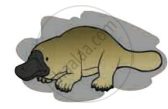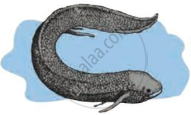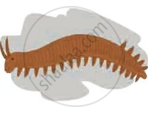Advertisements
Advertisements
प्रश्न
Human tailbone is a vestigial organ. Explain.
उत्तर
The vestigial organ is the remains of a structure that was functional in some ancestors but is no longer functional in the organisms.
In humans, many vestigial structures show a relationship to other mammals including the primates. Ancestors of human were having well-developed tailbone as their adaptation was arboreal. But gradually humans got adapted to the terrestrial habitat. So, their human tailbone is reduced (vestigial).
APPEARS IN
संबंधित प्रश्न
Mammals : _________ : : Amphibia : Fishes
State the connecting links between Peripatus with Annelida and Arthopoda.
What are vestigial organs?
Differentiate between homology and analogy. Give one example of each.
(a) Select the homologous structures from the combinations given below:
(i) Forelimbs of whales and bats
(ii) Tuber of potato and sweet potato
(iii) Eyes of octopus and mammals
(iv) Thorns of Bougainvillea and tendrils of Cucurbita
(b) State the kind of evolution they represent.
Which one of the following pairs of vegetables is an example of homologous structures?
(A) Potato and sweet potato
(B) Carrot and radish
(C) Carrot and tomato
(D) Tomato and radish
Four students P, Q, R and S differently reported the following set of organs to be analogous :
P. Forelimb of a frog and forelimb of a lizard
Q. Forelimb of a bird and forelimb of a human
R. Wings of a parrot and wings of a butterfly
S. Wings of a bird and wings of a bat
The two students who have reported correctly are :
(A) P and Q
(B) Q and R
(C) R and S
(D) P and S
Can the wing of a butterfly and the wing of a bat be considered homologous organs? Why or why not?
Explain the terms analogous and homologous organs with examples.
Find out from newspapers and popular science articles any new fossil discoveries or controversies about evolution.
Attempt giving a clear definition of the term species.
Explain with an example for the given, how the following provides evidence in favor of evolution in organisms :
Analogous organs
Name the scientists who Discovered the fossil of Australopithecus
How do homologous organs help in providing evidence for organic evolution?
Differentiate between analogous and homologous structures.
The organs which perform different functions but have the same basic structure are known as :
(a) homologous organs
(b) analogous organs
(c) homolytic organs
(d) analytic organs
The organs P and Q of two animals have different structures but similar functions. On the other hand, the two organs R and S of two other animals have the same basic structure but different functions.
(a) What are the organs like P and Q known as?
(b) Name the organs like P and Q. Also name the animals which have such organs.
(c) What are the organs like R and S called?
(d) Name the organs like R and S. Also name the animals which have such organs.
In a class, students were asked to observe the models/slides/pictures of the skeletons of forelimbs and wings of different organisms. After the observations the students made the following groups of homologous structures. Select the correct group :
(A) Wings of a bird and a butterfly
(B) Wings of a pigeon and a bat
(C) Wings of a butterfly and a bat
(D) Forelimbs of a cow, a duck and a lizard
What do we call the degenerated or partially developed useless organs in living organisms? Enlist such organs in human body? How the same organs are useful in other animals?
Explain with suitable examples importance of anatomical evidence in evolution.
Answer the following question.
Wisdom teeth : Vestigial organs :: Lungfish : ....................
Draw a labelled diagram of T.S. of a leaf showing Kranz anatomy.
_____________ is a vestigial organ in human beings.
Find an odd one out.
Find an odd one out.
Find an odd one out.
Give scientific reason.
Duck-billed platypus shows relationship with mammals.
Write the answers to the questions by observing the figure below.
 |
 |
 |
| (a) | (b) | (c) |
- Write the name of the animal ‘(a)’ in the figure.
- Write the name of the animal ‘(b)’ in the figure.
- Write the name of the animal ‘(c)’ in the figure.
- Which evolutionary evidence is illustrated by this figure?
- Write the definition of that evidence for evolution.
The degenerated and non-functional organs found in an organism are called ______.
Why do all the gametes formed in human females have an X chromosome?
Cucurbits do not develop thick and woody stem as they are:
Basic principles of embryonic development were pronounced by:
The study of fossil evidence of evolution is called ______
The bones of forelimbs of whale, bat, cheetah and man are similar in structure, because ______.
How do we compute the age of a rock?
While creation and presence of variation is directionless, natural selection is directional as it is in the context of adaptation. Comment.
Find odd one out:
